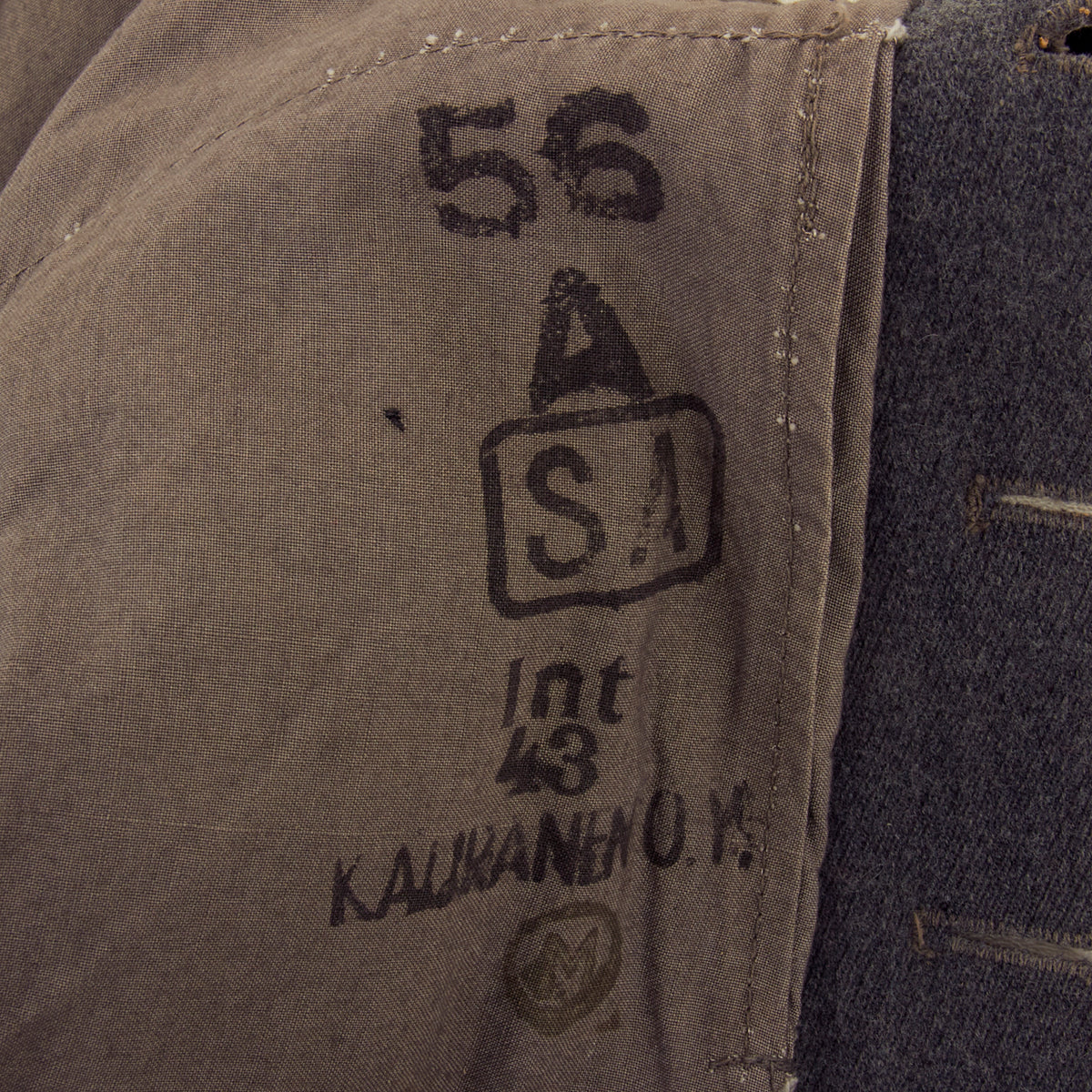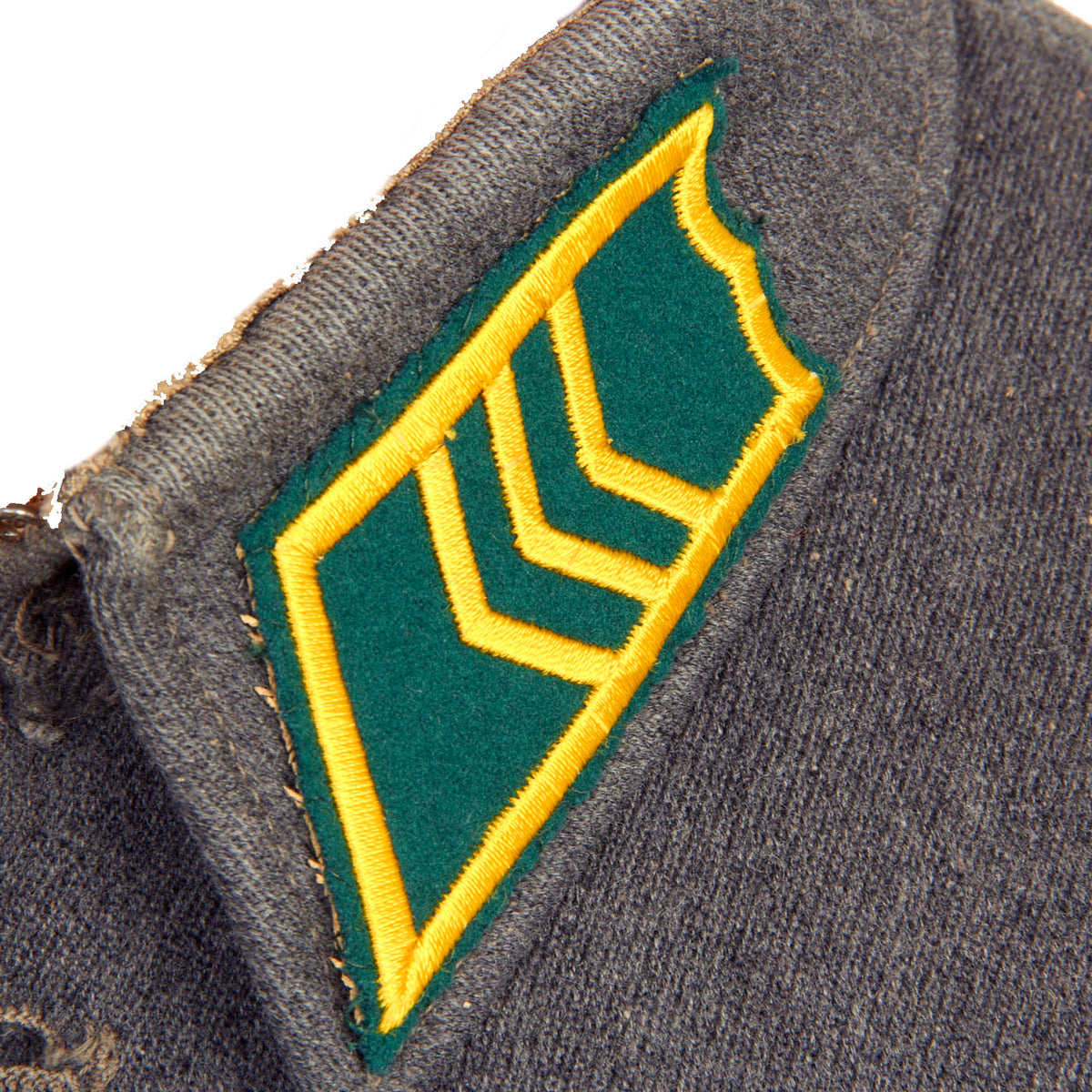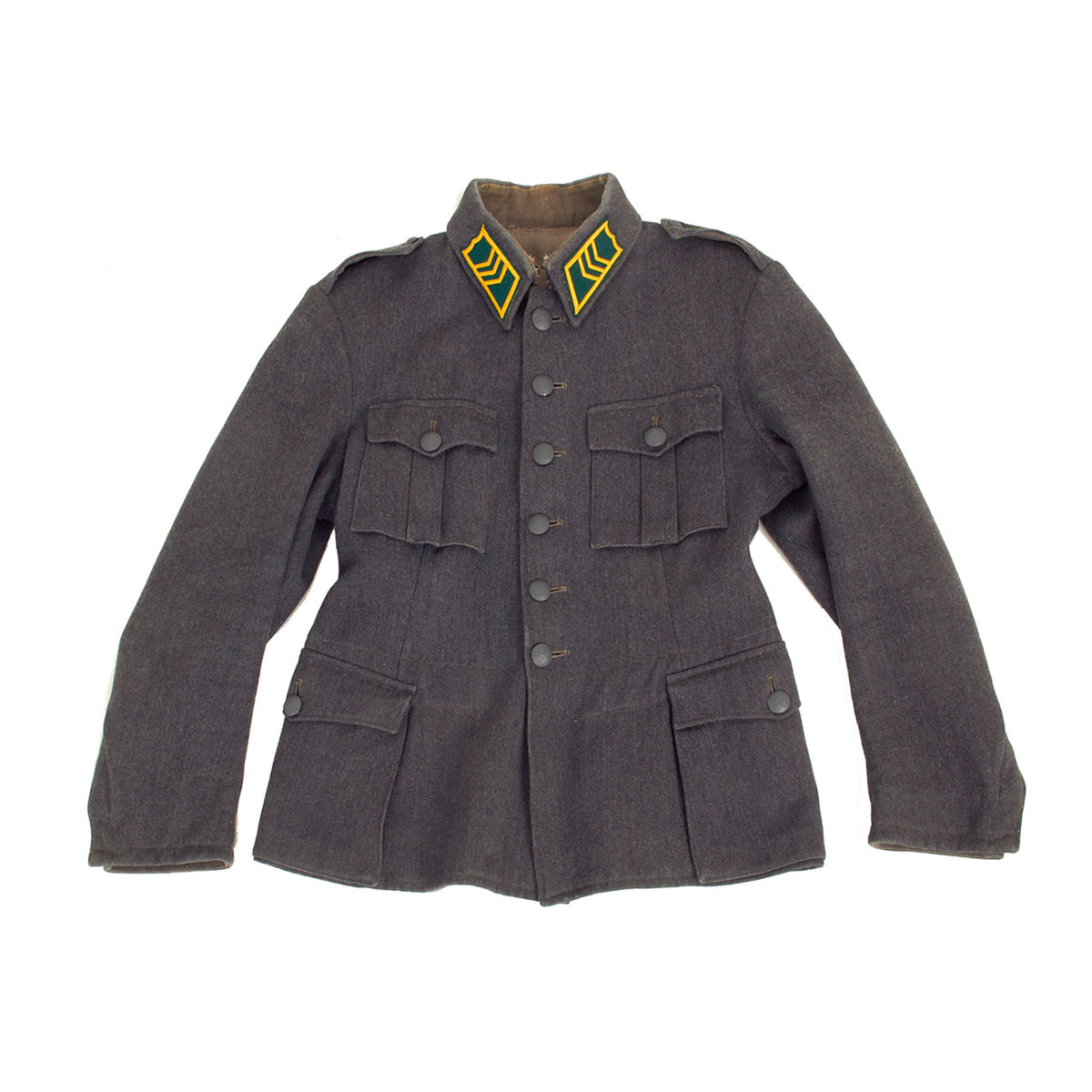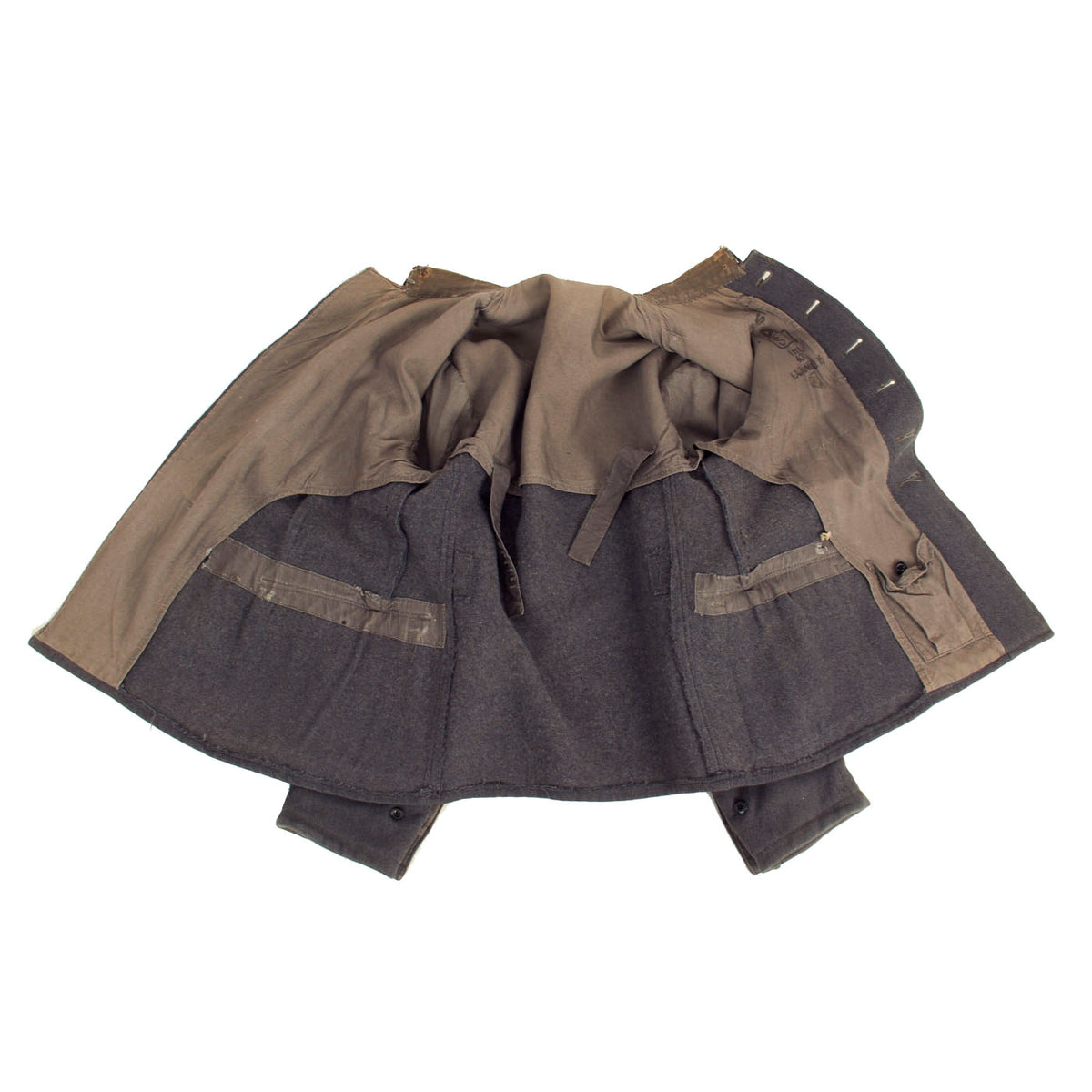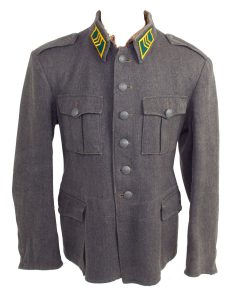Original Finland WWII Finish Army Alikersantti Undersergeant M36 Wool Uniform Tunic Original Items
$ 650,00 $ 195,00
Original Item: Only One Available. The M36 uniform was the standard issue Finnish military uniform during World War 2 and after the war and remained in use all the way until 1960’s. It was designed by the Field Equipment Board (Kenttävarustustoimikunta) lead by Colonel Aarne Heikinheimo (later Major-General and Inspector of Infantry until his accidental death in test-firing event of 47-mm mortar prototype in year 1938) and composed of jaeger officers (former Finnish volunteers of Prussian Jaeger Battalion 27 of World War 1).
While tunic m36 was a direct further development from the experimental uniform m34, it also had some notable changes. The most notable of these is probably the change in color of the fabric to steel-gray, which is probably for the large part credited to a proposal made by Lieutenant General Harald Öhquist (1891 – 1971). The main reason for this change of uniform’s color was most likely a financial one – namely it allowed uniform items previously acquired for old military uniform m22 to be continued to be used with new uniforms. The other significant change was replacing the open collar design used in m34 with a “Polish-style” folded collar closed with two small metal hooks.
With introduction of these changes Finnish military tunic m36 became groin-length tunic made from steel-gray wool and is closed with a single row of six large buttons, the lowest of which was slightly under waistline and standing folded collar which was closed with two metal clasps.
The tunic has large external breast pockets and even larger side pockets, which both have flaps closed with standard Finnish uniform buttons featuring a coat of arms lion emblem. There is no center seam in the back of the tunic, but there are seams on sides of the tunic. Back of the tunic has belt hooks made from metal for keeping the belt in its correct place which are unfortunately missing. Tunic collar is made from the same steel-gray wool as the rest of the tunic and is a folded standing collar about 5 – 7 cm /2 – 2.8 in height.
Cuffs are straight type with a slit about 12 cm / 4.7 in long closed with two small hidden buttons. Hidden inside the cuff was a small button that can be used for tightening the mouth of the cuff. Tunic epaulets are made from the same wool as the rest of the jacket and about 6.0 – 6.5 cm (2.4 – 2.6 in) wide, getting narrower towards their end that is closed with small coat of arms lion emblem buttons.
The condition is excellent and appears without any significant damage or moth marks. All buttons are present and retain almost all of their original paint.
Truly a beautiful example that comes ready to display!
Measurements:
Collar to shoulder: 10”
Shoulder to sleeve: 25”
Shoulder to shoulder: 21”
Chest width: 20”
Waist width: 19”
Hip width: 23”
Front length: 29″
Finland in World War II
Finland participated in the Second World War initially in a defensive war against the Soviet Union, followed by another battle against the Soviet Union acting in concert with Germany and then finally fighting alongside the Allies against Germany.
The first two major conflicts in which Finland was directly involved were the defensive Winter War against an invasion by the Soviet Union in 1939, followed by the Continuation War, together with Germany and the other Axis Powers against the Soviets, in 1941–1944. The third conflict, the Lapland War against Germany in 1944–1945, followed the signing of the Moscow Armistice with the Allied Powers, which stipulated expulsion of NSDAP German forces from Finnish territory.
By the end of hostilities, Finland remained an independent country, albeit “Finlandized”, having to cede nearly 10% of its territory, including Viipuri (Finland’s second-largest city [Population Register] or fourth-largest city [Church and Civil Register], depending on the census data), pay out a large amount of war reparations to the Soviet Union, and formally acknowledge partial responsibility for the Continuation War. As a result of this territorial loss, those living within these regions abandoned their homes, relocating to areas that remained within the borders of Finland.
Fast Shipping with Professional Packaging
Thanks to our longstanding association with UPS FedEx DHL, and other major international carriers, we are able to provide a range of shipping options. Our warehouse staff is expertly trained and will wrap your products according to our exact and precise specifications. Prior to shipping, your goods will be thoroughly examined and securely secured. We ship to thousands clients each day across multiple countries. This shows how we're dedicated to be the largest retailer on the internet. Warehouses and distribution centres can be located throughout Europe as well as the USA.
Note: Orders with more than one item will be assigned a processing date depending on the item.
Before shipping before shipping, we'll conduct a thorough inspection of the items you have ordered. Today, the majority of orders will be delivered within 48 hours. The delivery time will be between 3-7 days.
Returns
The stock is dynamic and we cannot completely manage it because multiple stakeholders are involved, including our factory and warehouse. So the actual stock may alter at any time. It's possible that you may not receive your order once the order has been made.
Our policy is valid for a period of 30 days. If you don't receive the product within 30 days, we are not able to issue a refund or an exchange.
You can only return an item if it is unused and in the same state as the day you received it. You must have the item in its original packaging.
Related products
Uncategorized
Uncategorized
Armored Burgonet Helmet & Polearm from Scottish Castle Leith Hall Circa 1700 Original Items
Uncategorized
Band of Brothers ORIGINAL GERMAN WWII Le. F.H. 18 10.5cm ARTILLERY PIECE Original Items
Uncategorized
Uncategorized
Uncategorized
Uncategorized
Uncategorized
Uncategorized
Uncategorized
Uncategorized
Uncategorized
Angolan Rebel 1970s era 60mm Inert Display Mortar from Angolan Civil War Original Items
Uncategorized
Australian WWII Owen MK1 Machine Carbine SMG Custom Fabricated Replica with Sling Original Items
Uncategorized
Uncategorized
Uncategorized


